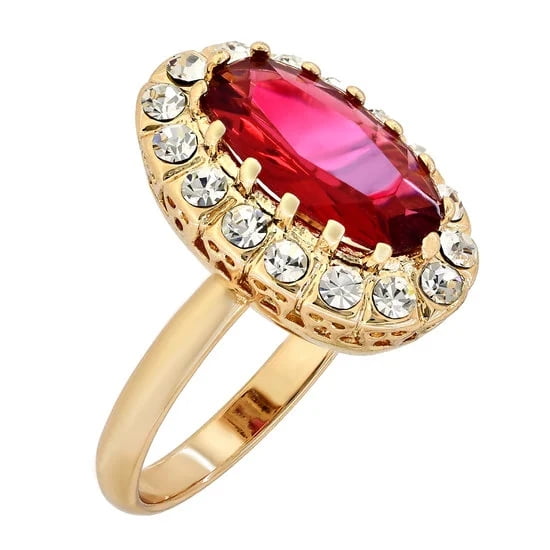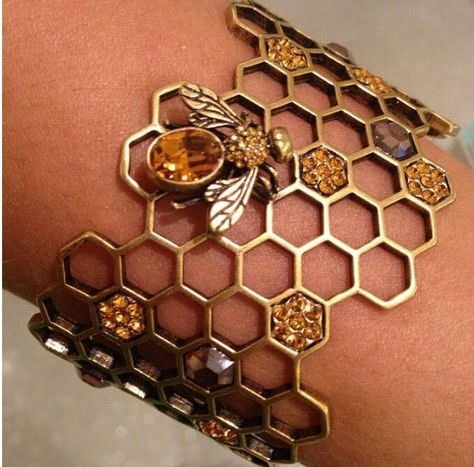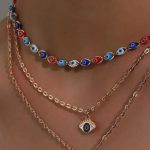The history of jewelry in the Philippines has been around for centuries. The use of jewelry was first recorded during the pre-colonial era, when the many indigenous cultures used this form of adornment as a way to express wealth and status.
Jewelry has since evolved in terms of style and usage over the years, but it is still used in many ways to make a statement. Here is a brief look at the history of jewelry in the Philippines and how it’s being used today.
In Pre-Colonial Times
Jewelry was very popular during pre-colonial times in the Philippines, particularly for high-ranking members of society who often flaunted their wealth by wearing huge collections of gold jewelry including ornate earrings, necklaces, anklets and headpieces that were intricately decorated with various gems and stones. Such items were signs of status among these people’s culture. Additionally, such pieces could also be gifted to family members or given as gifts upon important occasions like weddings between two families.
20th Century Onwards
With the coming of industrialization and globalization throughout different parts of the world, more modernized forms of jewelry began to appear throughout Filipino culture as well. Goldsmiths began crafting more delicate pieces using different materials such as gold, silver, gems and diamonds which could be combined together with intricate designs to create truly unique pieces that gave off a more contemporary vibe while still having cultural roots.
Jewelry also stopped being simply an expression of wealth, but also served as an emblem of personal style and a reflection of each individual’s beliefs or interests.
Conclusion
With such an extensive history dating back centuries ago, there is no doubt that jewelry remains highly unique part of Philippine culture today. Its function may have changed over time from solely expressing status and wealth to becoming an extension self-expression; however its purpose continues to remain prominent in everyday life for Filipinos all over the globe.
Pre-Colonial Jewelry Practices
The history of jewelry in the Philippines dates back centuries before Spanish colonization. The practice of jewelry-making has many different origins, and it has been heavily influenced by native oral histories and mythology. A great example is from indigenous groups like the Bukidnon who commemorate their ancestors through ornamental necklaces known as albayag.
These adornments, linked to the concept of strong prays for health and a prosperous agricultural season, are usually crafted with shells, coins and hardwood or grass fibers twisted together. Such practices indicate that jewelry had an important spiritual significance and was even seen as a bridge between humans, nature and the spirit world.
In addition to this locally crafted jewelry, Filipino tribes were also exposed to international beliefs system due to constant migration and trade with nearby countries such as India, China and Japan. This greatly impacted the jewelry designs of Filipinos during pre-colonial times as evidenced by some pieces sporting Indian-style carvings or Japanese floral motifs incorporated into them.
In particular, gold filigree became incredibly popular during this time period due to its intricate detailing which gave it an effortlessly elegant feel that stood out from its neighbors’ styles. It was common for high-ranking individuals to have these unique pieces crafted for them – often in shapes akin to flora or fauna – as a signifier of prestige.
Furthermore, religion played a substantial role in shaping Philippine jewelry customs over time. Its influences can be seen in several surviving artifacts such as Christian crosses made of ivory or carved wooden rosaries used by Filipino Catholics during processions and events held by priests. The fact that early missionary orders often desired to have local craftsmen customize indigenous objects is also an indication of how intertwined faith was in ornamentation traditions across the archipelago prior Spanish rule.
Traditional Jewelry Designs During Spanish Colonial Period
The history of jewelry in the Philippines dates back to colonial times, when gold sourced from local mines was used to craft ornamental pieces. Jewelry has long been a sign of status and power among Filipino society, with men and women alike donning flashy accessories as a form of display. During the 16th-19th centuries Spanish colonial period, many traditional jewelry styles emerged according to style and class.
Elaborate gold rings, earrings, armlets, necklaces and other body adornments were produced by master artisans using a variety of intricate designs and patterns. These often featured floral or animal motifs combined with pearls or precious stones that were imported from Europe or the Middle East. Gold nuggets served as decoration for many pieces of jewelry during this period as well, reflecting the value placed on natural beauty and resourcefulness.
Four distinct types of metal were used in creating traditional Philippine jewelry: bronze, brass, red copper (or tenuera), and silver (or pilak). Different colors could be extracted from each type depending on how it was forged and treated with chemicals.
Black copper (dilaw) became popular during this time because it’s more malleable than other metals when heated. A combination of different colors would be used to create stunning patterns for larger objects like pendants or sculptures-especially those made for ceremonial purposes at royal courts.
Traditional Filipino jewelry also showed signs of regional origins; pieces made in Luzon tended to feature bas-relief designs while those crafted in Visayas typically portrayed animal figures. In Mindanao, small colorful beads called agsam made mainly out of shells strung together in geometric shapes used to create unique wearable jewellery items such as chokers and earrings.
Many gold smiths would combine their respective regional traditions along with elements from European trends – often adding Christian symbols incrusted with precious stones – to create dynamic hybrid works full significance deep within the culture.
Despite being considered luxury goods throughout most of its history, contemporary Filipino jewelry reflects an abundance of creativity across various social classes not just limited by wealth but geographical location as well – contemporary city polished metalwork commingling with rural wood carvings. Today’s handcrafted jewelry pieces still brim over with symbolism-from treasures originally made for aristocrats until modern interpretations offering self representation through ostentatious outlets.
Where once there was only precious metal on offer , now fashion design is invited- – exuberant plastic fabrics swinging through ties designed for the 21st century trend setter.
Filipino Influences and Cultural Adaptations During American Rule
The arrival of the Spanish conquistadors to the Philippine Islands in the 16th century brought about a profound change in Filipino craftsmanship and jewelry. Displays of intricate carving, casting, and filigree details heavily influenced Filipino jewelry design.
This marked a period of major adaptation of foreign influences to native styles in the Philippines. As the country rapidly began to adopt European ways into everyday life, it was only natural for them to similarly adapt the designs that adorn their bodies as well.
During American rule following Spanish colonization, Filipinos encountered their second wave of cultural and jewelry transmission. The fashion scene in the Philippines during this time became heavily westernized as American standards were adapted into Filipino design.
From garters made with combination of materials, particularly pearl and shell buttons, prominent cabochon gemstones, and straight lines being used as motifs in tiaras – Filipinos began wearing luxurious pieces which were modeled after what they considered fashionable at the time. Pendants featuring anchors or spears began popping up among baro angoras with hybrid designs that blended both Spanish-Filipino clasping methods and American wire-wrapping decorations.
The Gold Standard ushered forth by American government brought new changes yet again – before this period goldsmithing had been focused on silver due to its cheaper cost; gold was only manageable by wealthy citizens who could afford it. However this standard gave more accessibility to goldsmithery – allowing for filigree patterned rings, gate bracelets (known as salets), and butterfly-shaped earrings (or kabkab) to become increasingly popular among all socioeconomic classes across both rural and urban areas.
Overall, these two major foreign influences have heavily impacted traditional jewelry styles throughout Filipino history – expanding natives’ knowledge base and providing better access to various materials from international sources through trade networks between regions like China, Japan and Mexico.
This ensured that Filipino crafters continued producing unique jewelry pieces which reflected both native tradition yet also seamlessly incorporated overseas trends along side modern sensibilities – vitalizing old concepts while preserving timeless icons so generations can continue enjoying impressive variations on classic themes inspired by centuries-long history.
Humble Beginnings to Refined Elegance in the Twentieth Century
The history of jewelry in the Philippines has a long and complicated story. It took centuries for it to be refined from its primitive beginnings to the luxury items that it is today. During the pre-colonial era, Philippine jewelry was usually made from natural materials such as seashells, wood, feathers, animal bones, and plants. These handicrafts are believed to have held religious and symbolic importance in the belief systems of indigenous Filipino tribes.
As more foreign influences reached the archipelago beginning in the sixteenth century, these traditional jewelries slowly evolved into more elaborate and modernized works of art. Spanish invaders brought with them gold smithery techniques – traditionally used by Aztecs and Incas around South America – that served as an inspiration for Philippine jewelry design.
Goldsmiths merged this craft with what they already knew and turned it into refined jewelry pieces that contain intricate designs such as chains, coins, earrings, locket necklaces, bangles, pendants and finger rings adorned with gems (mostly pearls).
By the twentieth century, modern industrial production methods have been applied to create fine pieces of jewelry using precious metals like silver made through electroplating and casting. Industrialization also enabled gemstones – particularly diamonds – to be imported en masse from Tier One countries like India with much cheaper costs than before, allowing every Filipino access to luxurious ornaments at affordable prices.
Mass production lowered price points across various kinds of jewelry while still possessing quality since all jewelries must go through strict certification processes prior to being released into the market.
This modernization expanded on what sort of styles or motifs can be put onto a piece of jewelry while maintaining exquisite craftsmanship even during mass production levels. Today’s local Filipino craftsmen produce earrings studded with diamonds or intricately-designed engagement rings fit for wedding ceremonies – something which was unimaginable just 50 years ago due to cost constraints.
Preservation of Traditional Crafts and Artisans in Modern Times
The Philippines has a long and rich history with jewelry. Tribes dating back centuries have created pieces for adornment, wealth storage, and spiritual rituals. These diverse communities have utilized precious metals, gemstones, and polymer resins to craft intricate designs that speak to the tribal traditions of the time.
Today’s modern fashion landscape often favors trendier pieces; however, traditional jewelry in the Philippines remains a draw for many Renaissance admirers who appreciate the precision and history of past techniques. As there is an increased focus on sustainable buying, more people are looking towards ethnic markets as a way to support local artisans.
Inquiries into Philippine tribal jewelry styles prioritize achievement and success of regional artisans by allowing them to continue engaging in their crafts while earning an income through the sale of traditional pieces.
Projects put forth by Filipino organizations like Art Keepers Inc’s support efforts assist burgeoning artists in being able preserve traditional Filipino crafts while making enough money to become successful providers. From supporting artisans with further training opportunities and access to materials, helping set up pop-up stalls at museums and shows internationally or providing better stock evaluation systems, initiatives such as these provide contemporary designers in the Philippines with necessary assistance that is required renovate their artisanal practice.
By reorganizing marketing strategies for jewelry creators – be it for exports or local markets – rural spots across Luzon can remain sources for sustenance craftsmanship specialist. Providing wider access to successful solutions like this give aspiring craft artisan’s appropriate skills sets valuable enough to amass financial freedom through trading their unique products.
Jewelry today serves as a marker for added value but also holds democratic power beneath every beadwork necklace or plain filigree Hoop earrings. Future generation advantage from understanding distinct histories behind each piece here improving access specialized workshops teaching design principles , Metallurgical practices ethics commerce range cultural significance varying embodiments creates platforms offer creative birthplaces new concepts achieving economic stability along greater dimensions well-being.
Finally , proper appreciation earned when preserving giving freedom utilize ancient practices informing broader future generations still touched pieces passed down hundreds years ago bearing positive – impact levels improves sense life purpose recognition connectedness longer exuding radiance eternity throughout visual storytelling.
The Rise of Contemporary Filipino Jewelry Design Movements
The history of jewelry in the Philippines stretches back centuries, to the ancient Philippine cultures and societies from which modern Filipino jewelry draws its influences and designs. The diversity of cultures, ages and design styles found within the Philippine Islands creates for a vast number of jewelry making techniques, styles and materials. Artifacts recovered from archaeological sites suggest that gold was mined and crafted into ornaments as early as 900 AD.
These items have been found all throughout the islands, some aquired through trade or other interactions with foreign societies. This century old legacy is evident in contemporary Filipino jewelry making today.
Although traditional adornments still prevail within many parts of the Philippines, the twenty-first century has witness a rise in contemporary Filipino jewelry style movements. This increase is due to an enhanced development within regions urban centers like Manila which have access to resources both local and imported to foster ever new ideas.
From sculpted bangles made in urban slums, to intricate ensembles handmade by multi-generational family jewelers, each movement brings an unique perspective on artistry combined with traditionality prevalent in the formation of these pieces.
These movements include everything from recreating traditional patterns in new mediums such as fused glass, to intricate embroidery prepared by hand using beads instead of threads on fabrics like silk or lace. Many utilize motifs that are derived from tribal lores or specific Philippine artistic traditions such as weaving or platemaking techniques that render delicate details repeated throughout handcrafted objects no matter how large or small they may be.
Watches made from wooden beads paired with leather straps; handcrafetd metal sculptures recycled from scrap metals; these are just examples of some pieces contemporary filipino studiones produce that represent inner voice amidst heritage echoing throughout centuries behind them while creating something entirely new altogether.
Closing
The influence of jewelry on Philippine cultural identity over the centuries is hard to deny. Earrings, necklaces, bracelets, and more have become markers of Filipino culture and identity for many centuries now. This is especially true during special occasions such as birthdays, festivals and other significant life events.
Aside from its traditional role in these types of rituals, jewelry also has a massive impact on the country’s fashion scene as well. This makes it an invaluable part of Filipino culture in itself, a marker of how beauty, value and importance manifest differently in different eras and contexts.
The history behind this connection between jewelry and Philippine cultural identity goes back many centuries – some even hypothesize its roots to be as far back as ancient China or mainland Indonesia where much of the country’s early inhabitants likely originated from. From these origins came unique styles like the Spanish-influenced Camahua earrings from the 18th century or Tali-tali ankle bracelets beginning in the late 19th century which are still seen today worn by locals on formal occasions.
But jewelery wasn’t just for those partaking in formal events or practices – it was used everyday by Filipinos for practical purposes too. The most iconic example is that of agsam leaves, collected locally from rivers which were then folded into intricate patterns known through out the archipelago as ifugao jewelry.
It had both decorative appeal but also purposeful utility such as providing protection against rocks while fishing or anchoring clothes while traversing streams via rafts. Not only this but it frequently symbolized class and prominence with wealthier individuals able to afford gold embellished pieces that were prestigious enough to be passed onto future generations within families – something still seen today across the islands.
In conclusion, looking at all aspects of Filipino culture – traditional and modern – it’s clear that jewelry has held a prominent place in society historically and will no doubt continue to do so moving forward into new heights. Its influence is vast; with iterations being found throughout Southeast Asia as well making it even more interesting to see how various customs intertwine amongst countries with strong ties such as Philippines & Indonesia for instance.
Whether we’re talking adornments for traditional art forms like Ifugao textiles or statement pieces serving to enhance one’s style aesthetically – there’s no doubting that jewelry plays an integral role in developing a unique sense of heritage & selfhood amongst cultures around world.

Welcome to my jewelry blog! My name is Sarah and I am the owner of this blog.
I love making jewelry and sharing my creations with others.
So whether you’re someone who loves wearing jewelry yourself or simply enjoys learning about it, be sure to check out my blog for insightful posts on everything related to this exciting topic!





